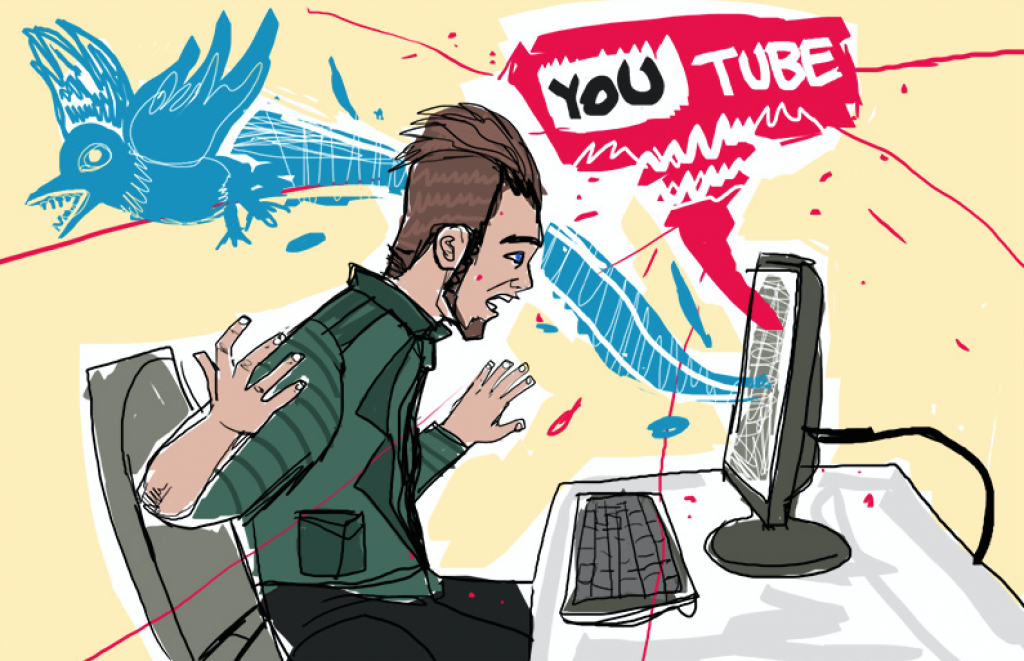
By Mars Dorian, {grow} Contributing Columnist
The digital age is supposed be the era of the solopreneur, allowing ordinary human content producers like you and me to start their own online media empire. The holy web has allowed us to bypass the former gatekeepers:
- Want to build your own radio show but can’t get a regular gig? Start a podcast.
- Interested in becoming a pro author but can’t snap a traditional publisher? Go self-pub.
- Love movies and shows but Hollywood and TV ditch you? Youtube’s your place to be.
The promise was: Be passionate, work your face off, and you can create your one (wo)man media empire. The digital wonderland of milk, honey and bits, and for a while, it worked.
Fast forward to 2016.
Popular social media platforms have tightened their grip on user generated content. A few years ago, Facebook limited your business/fan page reach in exchange for payment. Twitter is excluding speakers it deems as controversial and is known for shadow-banning, e.g. making your tweets invisible to your followers.
The newest social media giant to limit one’s content marketing is the video platform — and second biggest search engine — YouTube. The platform has become more strict on how videos are allowed to make money. Within a couple of days of the announcement, many YouTube stars with millions of subscribers have lost the ability to monetize their videos. Vlogger veterans such as Philip DeFranco and the Vlogbrothers had their videos cut from ad revenue for not being “advertiser-friendly.”
What does that mean? In simple terms, YouTube allows companies to advertise videos you create and upload. Based on how many views you attract, you get a small percentage of that advertisement money. Most professional YouTubers use this ad model to build their career, at least up until the new restrictions came into power:
Now, YouTubers talking about a subject like personal depression can be de-monetized, even if their videos follow an educational purpose and help young people deal with their dark moments of life. YouTubers who use curse words, or talk about religion, natural disasters, nuclear power, LGBT issues or simply even report the “daily news” can be, and often are, cut off from advertising.
However, big corporations like CNN can show controversial videos such as the Syrian boy covered in his own blood and can monetize it.
The squeeze on content producers
YouTube officials claim they simply want to make sure the video creators produce advertiser-friendly content, but that doesn’t explain why corporations don’t have to abide by these same rules.
Many pro YouTubers themselves offer a different explanation. They claim that big corporations lament the new competition of user generated content and using their power and money to “fight” against that trend.
At this point, it’s just speculation. But one thing is sure—the old gatekeepers are slowly but surely leaving the town and the new ones are busy setting up their own power structures.
Here’s what it means for you:
1. The platform is a means to an end, not the end itself.
A year ago, I visited a blogger conference in Berlin where a marketing expert had warned solo-preneurs to stop using Facebook and YouTube exclusively for their online biz. His advice was to diversify their income streams at all costs.
He was right.
Facebook fan page owners who relied solely on their Facebook presence had to pay dearly (pun intended) when the company started charging creators for reaching their audience. Now YouTube has cut ad money for a variety of indie broadcasters, and it’s likely to get worse.
The popular YouTubers Philip DeFranco and the Vlogbrothers, which I have mentioned above, use merchandizing and the crowdfunding platform Patreon to independently monetize their videos.
2. Create a network independent of the networks
Facebook, Twitter, and YouTube can shut you down without explanation. If your entire social and business network thus relies on a platform, you’re in limbo. That’s why I’m personally creating an off-line list with addresses of important people where I state their type of connection, why I know them and what their biz/brand is. The list can be a simple document, an Excel sheet or, dare I say, a paper-based address book.
3. Remember the adage: If you don’t pay, you’ll pay for it.
What else have YouTube, Twitter, and Facebook in common? You don’t pay for them. Uploading and sharing your content is free, boosts can cost extra (see Facebook). Having that ‘freedom’ means you have little to no rights–those platforms don’t owe you anything.
On the contrary, the more you pay for a service, the more likely you are to have a say. Which brings us to the last point:
4. Website and e-mail are still safe bets.
“The money’s in the list,” said the stereotypical marketer from the ancient 2000s. For better or worse, that advice is truer than ever. Top social media advisors have warned for years now that every network is merely a channel to guide your clients back to your website (which is hopefully privately hosted), where they are theoretically hooked by your content and ushered into your email list.
Conclusion
As online content creators of the globalized web world, we have gotten used to ignoring the old gatekeepers, but we have forgotten the rise of the new ones. It shows yet again how important it is to pay and own your own tools to ensure maximum control of your online career.
 Mars Dorian draws funky illustrations and pens sci-fi thrillers for the Internet Generation. His latest novel is available on Amazon for just $2.99! Consider his artwork for your next project: http://www.marsdorian.com
Mars Dorian draws funky illustrations and pens sci-fi thrillers for the Internet Generation. His latest novel is available on Amazon for just $2.99! Consider his artwork for your next project: http://www.marsdorian.com


